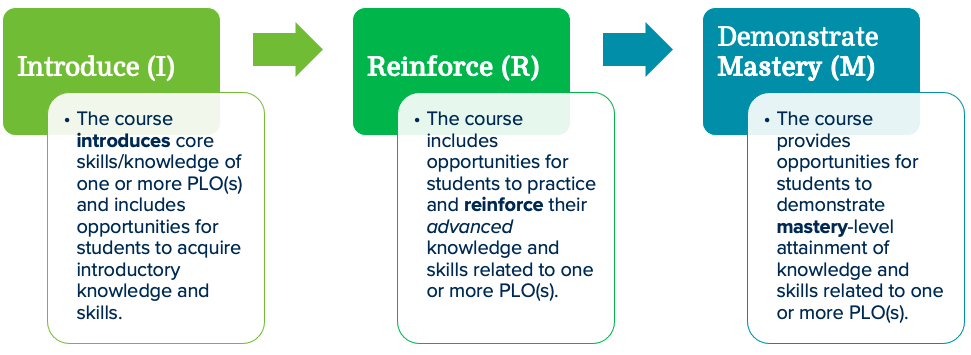When and how often does your program provide students opportunities to demonstrate their learning?
Curriculum analysis and mapping for equity
We "need to consider how curricula are structured to advance student learning and how courses within curricula are linked to help students make connections, transfer learning, and reach the goals we set for them in learning outcomes" (Jankowski & Marshall, 2017, p. 27).
Why does this matter?
When was the last time you thought about what it was like to be a novice in your field?
As experts, many faculty demonstrate their disciplinary mastery “so automatically and instinctively that they are no longer consciously aware of what they know or do” (Ambrose et al, 2010, p. 97).
Unfortunately, the implicit nature of faculty expertise doesn't always translate directly to clear goals for student learning. Instead, sometimes the very thing that qualifies someone as an expert--unconscious competence-- can lead to disciplinary blind spots, which in turn, may create unintended obstacles for students.
The iterative curriculum alignment process of reflecting on your expectations for student performance may help bring your implicit expectations about disciplinary knowledge, skills, and abilities to an explicit level.
Equity through alignment
We cannot hold students responsible for demonstrating mastery of learning outcomes unless we provide sufficient number and sufficiently varied opportunities for them to achieve those outcomes. This is true at the course- and program-level.
An equity-centered aligned curriculum is characterized by direct and intentionally transparent relationships between Program Learning Outcome (PLOs), Course Learning Outcomes (CLOs), and opportunities for students to learn.
Curriculum analysis
Curriculum analysis is an intentional, iterative, and collaborative examination of the degree to which the program’s curriculum provides sufficient and sufficiently scaffolded opportunities for students to learn, develop, and demonstrate their attainment of PLOs.
- Sufficient in number: the program's curriculum includes multiple opportunities (i.e., more than two courses) for students to develop, reinforce, and demonstrate their attainment of the knowledge / skills associated with each PLO.
- Sufficiently scaffolded: the program includes opportunities for increasing levels of engagement with each PLO through which students develop, reinforce, and demonstrate their attainment of the knowledge / skills associated with each PLO.
Levels of engagement
It is necessary to identify the degree to which each required course provides opportunities for students to engage with the (sub)skill/knowledge for each PLO. We refer to those levels I, R, and M. See graphic below for details.

Curriculum mapping
“Mapping is a strategy for visualizing the areas where we think learning is happening as it relates to specific learning outcomes” (NILOA, 2018, p. 7).
The process of curriculum analysis yields a curriculum map, which visually represents the opportunities the program provides for students to engage with skill(s)/knowledge related to each PLO. Strong curriculum maps must include: A) all of the PLOs; B) required courses offered by the department / program; and C) Intended levels of engagement. (See image below.)

EQUITY CHECK
- Does the program provide sufficient (and sufficiently scaffolded) opportunities for students to learn and sufficient (and sufficiently scaffolded) opportunities to demonstrate their learning?
- Are the opportunities accessible & transparent for all?
